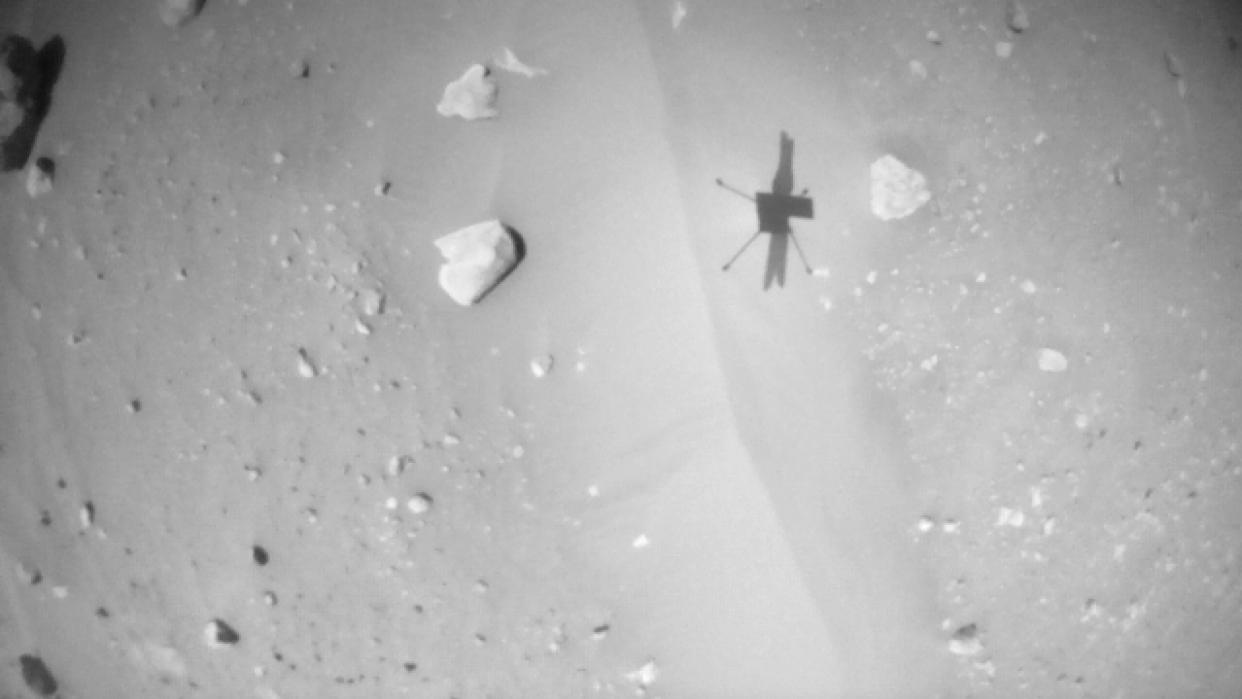NASA's Ingenuity helicopter soars past 100 minutes of total Mars flight time

NASA's Ingenuity helicopter now has more than 100 minutes of Mars flight time under its belt.
The 4-pound (1.8 kilograms) Ingenuity flew for the 57th time on Sunday (Sept. 3), covering 713 feet (217 meters) of ground on a sortie that lasted 129 seconds.
That latter figure pushed Ingenuity's cumulative Mars air time over the century mark, to 102.4 minutes, according to the mission's flight log.
Related: Mars helicopter Ingenuity phones home, breaking 63-day silence
Ingenuity landed with NASA's Perseverance rover inside the 28-mile-wide (45 kilometers) Jezero Crater in February 2021. Perseverance is hunting for signs of ancient Mars life on the floor of Jezero, which harbored a big lake and a river delta billions of years ago, and collecting dozens of samples for future return to Earth.
Ingenuity was originally tasked with showing that aerial exploration is possible on Mars, despite the planet's thin atmosphere. The little chopper aced this mission after a month-long, five-flight campaign. NASA then granted an extension, during which Ingenuity is serving as a scout for the Perseverance team.
RELATED STORIES:
— Mars helicopter Ingenuity: First aircraft to fly on Red Planet
— Perseverance Mars rover snaps amazing shot of dusty Ingenuity helicopter (photo)
— Mars helicopter Ingenuity snaps incredible aerial photo of Perseverance rover during 51st flight
Ingenuity's success will also pave the way for future Mars helicopters, if all goes according to plan.
For example, NASA plans to put two Ingenuity-like choppers on the lander mission that will retrieve Perseverance's collected samples. And the agency is working on larger, more capable helicopters that could do bona fide Mars exploration on their own, collecting data in hard-to-reach places and covering large swaths of Red Planet ground.

